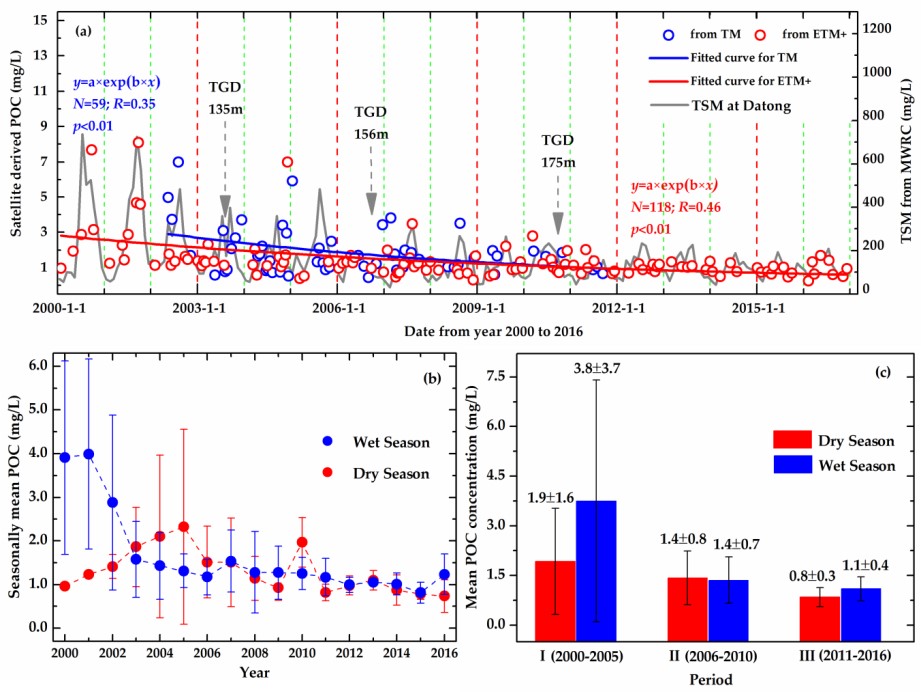As the largest Asian river and fourth world's largest river by water flows, the Changjiang River transports a considerable amount of terrigenous particulate organic carbon (POC) into ocean, which has experienced significant pressure from human activities. We conducted monthly samplings (from May 2015 to May 2016) at Datong, the most downstream non-tidal hydrological station along the Changjiang River. To monitor long-term POC variations, we developed a two-step POC algorithm for Landsat satellite data and calculated monthly POC flux during 2000–2016. Monthly POC flux ranged from a minimum of 1.4 × 104 t C in February 2016 to a maximum of 52.04 × 104 t C in May 2002, with a mean of 13.04 × 104 t C/month. At Datong, monthly POC flux was positively exponentially related to water flow (N = 118, R = 0.69, p < 0.01). In the wet season (May to October) with high water flow, a large amount of terrigenous POC was flushed into the Changjiang River. After the Three Gorges Dam (TGD), both POC concentration (R = 0.46, p < 0.01) and POC flux (R = 0.33, p < 0.01) significantly exponentially decreased during 2000–2016. After 2011 with regular operation of the TGD, POC transport at Datong showed relative stability and its seasonal difference became smaller. POC concentration from the TGD to Datong in the Changjiang mainstream (~1000 km) was also derived from Landsat data, which was spatially varied with water flow, slope gradient, and watercourse width. This study improved our understanding of spatiotemporal variations of the POC transport in the Changjiang mainstream, especially the influences of the TGD construction.

Fig. 5. Time-series of satellite-derived POC. (a) Satellite-derived POC concentrations during 2000–2016. Water level of the TGD reached 135 m in June 2003, 156 m in October 2006, and 175 m in October 2010, respectively. (b) Seasonal mean POC concentration. The wet season contained months from May to October, and the dry season contained all other months in the same year. (c) Seasonal mean POC concentrations in different periods. Period I included years during 2000–2005; Period II included years during 2006–2010; and Period III included years during 2011–2016.
